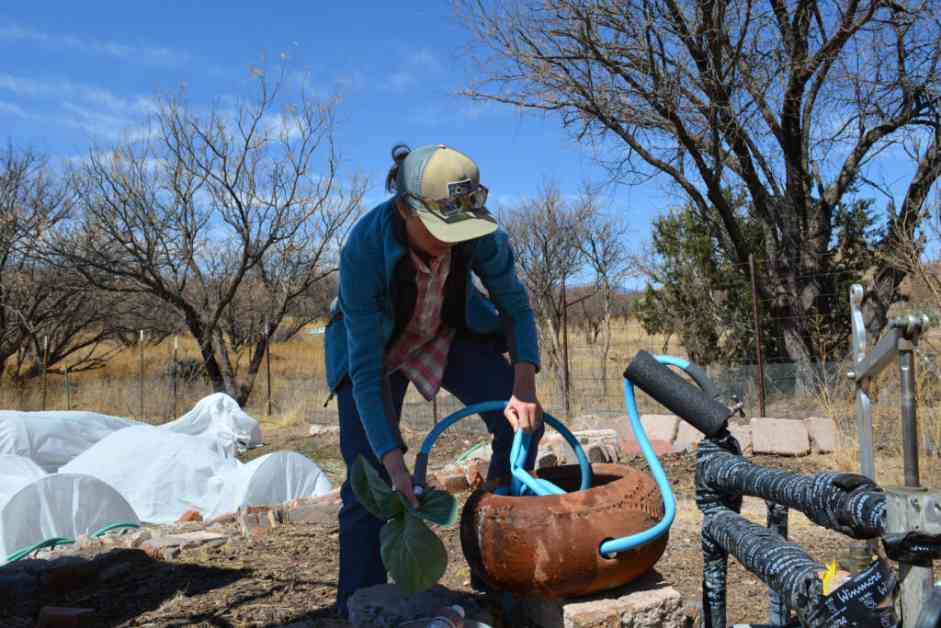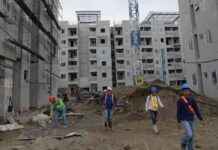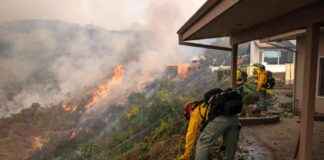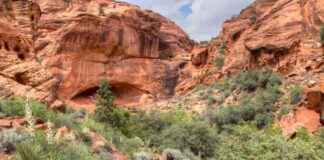Amidst the arid foothills of the Santa Rita and Patagonia mountain ranges in Arizona lies a landscape marked by erosion and dried vegetation, a stark reminder of the changing climate’s impact on the region. Rodrigo Sierra Corona, standing at the edge of a pit formed by years of flooding, explains the visible effects of the desert’s sporadic rainy seasons and increased aridification due to climate change. The lush biodiversity of the area, from coatimundis to jaguars, faces threats from overgrazing, habitat loss, and extreme weather patterns, further exacerbated by the erosion of the land.
The Fight for Conservation
To combat these ecological challenges, the Borderlands Restoration Network (BRN), a nonprofit organization led by Sierra Corona, has undertaken extensive conservation efforts. By installing erosion control structures like zuni bowls and tiny dams, BRN aims to restore the region’s hydrology, protect native vegetation, and preserve the fragile ecosystem. These structures not only prevent erosion but also facilitate the replenishment of aquifers and the growth of indigenous plant species essential for the area’s biodiversity.
Despite the critical nature of BRN’s work, the organization has faced a significant setback due to the Trump administration’s federal funding freeze on conservation projects. With over $1.2 million of funding frozen, representing 40% of the organization’s budget and affecting key restoration initiatives, BRN’s ability to continue its vital conservation work hangs in the balance. The freeze has halted projects, canceled youth internships, and left essential supplies like native seeds unused, jeopardizing the restoration efforts and community engagement programs crucial to the region’s environmental health.
Challenges and Urgency
The funding freeze not only impacts BRN’s operational capacity but also puts the livelihoods of local community members at risk. Sierra Corona faces the difficult decision of potential staff layoffs and the uncertainty of meeting project deadlines amidst the funding crisis. The urgency of the work grows each day, with the threat of invasive species encroachment, severe soil erosion, and the long-term impacts of climate change looming over the region’s delicate ecosystem.
As Perin McNeli, BRN’s native plant program manager, highlights, the loss of vital conservation efforts could have far-reaching consequences for the region’s ecological balance. The urgency to preserve native seeds, restore habitats, and combat environmental degradation becomes increasingly critical in the face of ongoing challenges and funding uncertainties. The rich biodiversity of southern Arizona, from its iconic Sky Islands to its diverse wildlife, faces a precarious future without immediate conservation interventions and sustainable resource management.
In the midst of environmental challenges and funding uncertainties, the Borderlands Restoration Network’s commitment to community engagement, habitat restoration, and biodiversity preservation remains unwavering. From its native seed farm to its educational programs, BRN plays a vital role in connecting local residents to the region’s unique landscape and fostering a sense of stewardship towards the environment. The organization’s efforts to restore watersheds, protect wildlife corridors, and promote sustainable land management reflect a broader commitment to environmental conservation and community resilience in the face of climate change.
As the battle for conservation funding continues, Sierra Corona and his team remain dedicated to their mission of restoring the region’s natural heritage and safeguarding its ecological future. The struggle to secure funding, uphold conservation contracts, and navigate political challenges underscores the ongoing fight for environmental preservation in Arizona’s diverse and fragile landscape. The fate of the borderlands and its rich biodiversity hinges on the collective efforts of organizations like BRN, community members, and environmental advocates united in their commitment to protect and restore the land for future generations.














